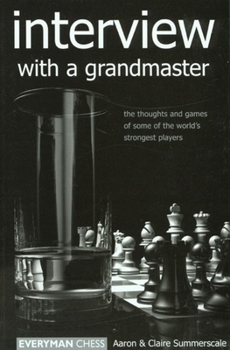Marshall Attack
The Marshall Attack is one of the oldest and most important openings in the history of chess. Black sacrifices a pawn against the Ruy Lopez in exchange for a long-lasting attack. Generations of the... This description may be from another edition of this product.
Format:Paperback
Language:English
ISBN:185744244X
ISBN13:9781857442441
Release Date:October 2003
Publisher:Everyman Chess
Length:176 Pages
Weight:0.65 lbs.
Dimensions:0.4" x 6.0" x 9.3"
Customer Reviews
1 rating
An excellent and relatively up-to-date book on the Marshall
Published by Thriftbooks.com User , 19 years ago
It sure is fun to play the Marshall attack with Black! You get plenty of shots against the White King. There are clear chances to win against a strong opponent with Black, since all it takes is one mistake by White. But I play this for White, not for Black. One reason is that White does not have to let you play the Marshall. Even after 1 e4 e5 2 Nf3 Nc6 3 Bb5 a6, White can simply play the Exchange Variation. And if White does play 4 Ba4 Nf6 5 0-0 Be7 6 Re1 b5 7 Bb3 0-0 you'll still be as likely as not to wind up in some sort of anti-Marshall. This fine book tells us all where the Marshall stands as of early 2003. First, there is the "old main line" with 8 c3 d5 9 exd5 Nxd5 10 Nxe5 Nxe5 11 Rxe5 c6 12 d4 Bd6 13 Re1 Qh4 14 g3 Qh3 15 Be3 Bg4 16 Qd3. Black is trying to get in 16...f5 and then ...f4. That does not work on move 16! So the line goes 16...Rae8 17 Nd2 Re6 18 a4 bxa4 (Lalic does not say so explicitly, but 18...f5 19 axb5 looks like it wins for White) 19 Rxa4 f5 20 Qf1 Qh5. Black has good chances to survive here. Next is the line I play, 15 Re4 g5 16 Qf3, which gives both sides chances, although a draw is a typical result. Chapter three gives a similar idea for White: 12 d3 Bd6 13 Re1 Qh4 14 g3 Qh3 15 Re4. Now the White rook is defended, so Black can't try 15...g5 any more. So we get lines like 15...Qf5 16 Nd2 Qg6 17 Re1 f5, after which Black has good chances to live. The next chapter discusses 12 g3 and other options on White's 12th and 13th moves. Black is okay with proper play. After that, we examine an important issue: alternatives to 11...c6. 11...Nb4, 11...Nb6, and 11...Nf6 (the original Marshall) do not work. But 11... Bb7 offers some chances for Black, although I think White is doing rather well after 12 Qf3 Bd6 13 Bxd5. Chapter 6 deals with the unsound Steiner Variation, namely 9...e4. White is much better after 10 dxc6 exf3 11 d4 fxg2 12 Bg5. This is a tricky line, and if White wants to allow the Marshall, she has to be prepared for it. Now we get into a variety of anti-Marshalls. The first is 8 h3, where an interesting possiblity for Black is 8...Bb7 9 d3 d6 10 a3 Na7. Lalic gives one of his games where he played this for Black. Next is 8 a4, where Lalic recommends 8...Bb7 9 d3 Re8. After that, we see 8 d4 Nxd4 9 Nxd4 exd4 10 e5 Ne8 with the idea ...Bb7. And we see that Black can survive 8 d3 d6 9 c3 Na5 10 Bc2 c5, with the idea of transferring the Kinght from f6 to the Queenside. The final variation is a little surprise from White: 8 c3 d5 9 d4. Black can get enough counterplay with 9...exd4 10 e5 Ne4. I recommend this book for those interested in playing either side of this exciting defence.




